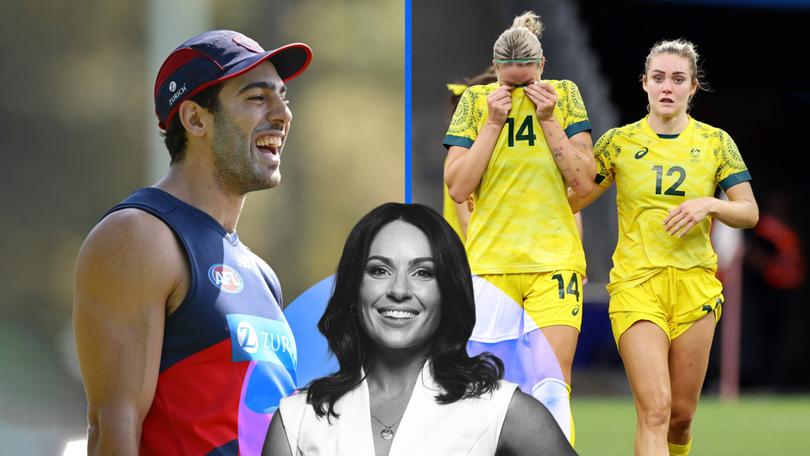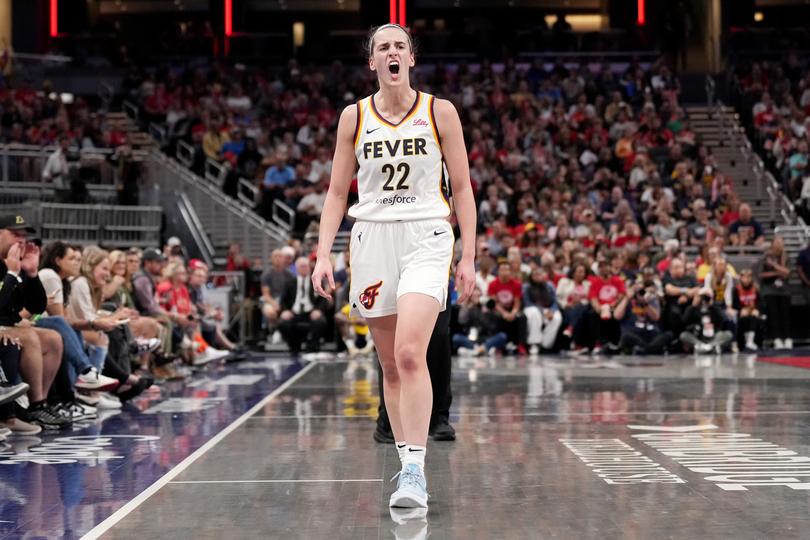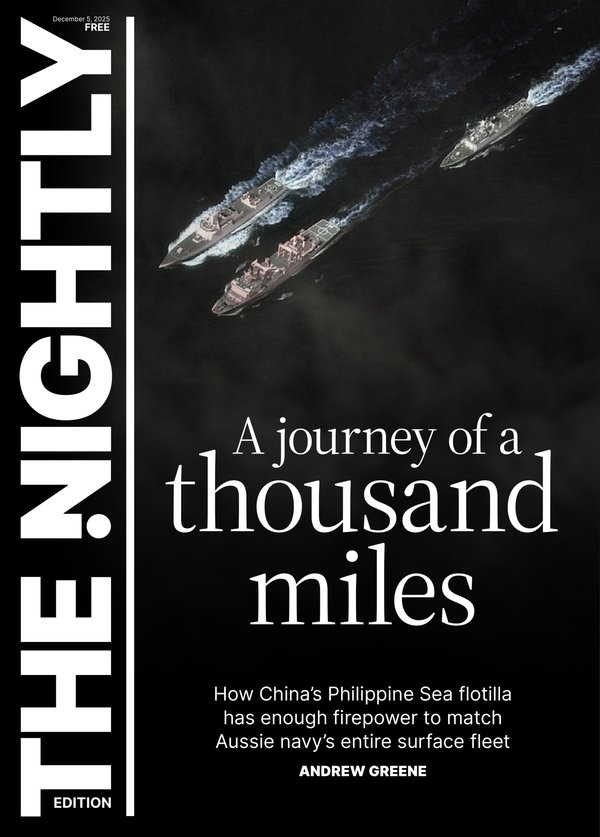GEORGIE PARKER: Sam Kerr’s Matildas put women’s sport on map but most athletes not earning like Caitlin Clark

There’s still some work to do, both on and off the field, but female athletes and women’s leagues are more visible than ever.
This is often called the Matildas effect, where since the Women’s World Cup in Australia last year, news outlets are increasing their coverage of women’s sport.
This means more people are seeing women’s sports, which is a good thing, but it’s still hard to be a female athlete.
Sign up to The Nightly's newsletters.
Get the first look at the digital newspaper, curated daily stories and breaking headlines delivered to your inbox.
By continuing you agree to our Terms and Privacy Policy.A recent study showed that a majority of female athletes at a professional level aren’t being paid like it, reminding us that the pay gap between men and women is huge.
Parity Now, a sports marketing platform, recently surveyed 500 women in 30 countries in 55 sports revealing some damning financial statistics.
It showed that 78 per cent of women earn $50,000 or less, and 58 per cent earn less than $25,000 (I know what it’s like to earn peanuts firsthand and can confirm it is no fun).
Not only are they earning less, but 41 per cent stated they spend more than $10,000 a year on their sport themselves, which is a huge percentage of your income when earning so little.
To put that into perspective, the average AFL wage is $441,000, though payers like Christian Petracca earn more than $1.2 million a year, the average NRL salary is $371,000, and the average NBA salary is a completely unrelatable (even to our male athletes) at $10.5 million.
So while there’s a discrepancy in pay, there is not necessarily a discrepancy in return on investment for the sports these women play in.
Studies have shown for every $1 invested in female sport, you get a ROI of over $7 — which is enormous, and higher than the rate of return for most football clubs in the UK.
Not only is there a huge financial gain to be made, brands also profit as women are better role models commercially with fans three times more likely to buy products endorsed by female athletes according to Parity Now.
What this shows is female athletes have more cut-through and make more of a splash.
Take, for example, Caitlin Clark, who has just been named the Time Magazine athlete of the year. I can’t name a current-day male athlete who has single-handedly put a sport more on the map than Clark has done in the WNBA.
Ilona Maher from the USA rugby 7’s team has done a similar thing in rugby.
If you followed the Olympics, you’d have seen Ilona, with her refreshing confidence and humour shining through.
I started following Ilona a couple of years ago when she had 50,000 followers -- she now has 4.7 million.
She recently signed with the Bristol Bears rugby union team in the UK, which upon the announcement that Ilona could potentially be playing, had to move the first game from a venue that held just 200 people, to one that held 27,000 people.
She, like Clark, is the audience watching the sport they play in once fans realise it is worth sticking around for.
This has happened back on home soil as well. We obviously know the Sam Kerr and Mary Fowler factor for driving support for the Matildas, but our female athletes at the Olympics have also done this.
Six of the top 10 Australian public figures searches on Google this year were for our female athletes in Australia.
Sure, one of those was Raygun, but the rest were pretty legit; Sam Kerr was alongside Olympic gold medallists Jess Fox, Saya Sakakibara, Arisa Trew, and Ariarne Titmus.
Big business has taken notice and loves backing big female stars to further their brands, but they are not necessarily backing the sport as a whole.

These non-sporting brands want to support women and know a name, so will go with it, rather than broadening their vision.
This created a catch-22 for female athletes in that they have to have exposure to become a star and they only get exposure when they become a star, meaning it’s tougher for the non-star athletes to get a look-in.
Now this wouldn’t be a problem if the rest of the female athletes were being paid enough, but they’re not.
It’s a complex issue and will obviously take some time to fix, but it’s really positive that data shows that women’s sport is worth investing in.
So, to continue that trend, if you’re a consumer, continue to consume and support the leagues and the athletes.
If you’re a business, invest in women’s sports. Not only will you make your money back and then some, you will also look enlightened backing the next big star.
